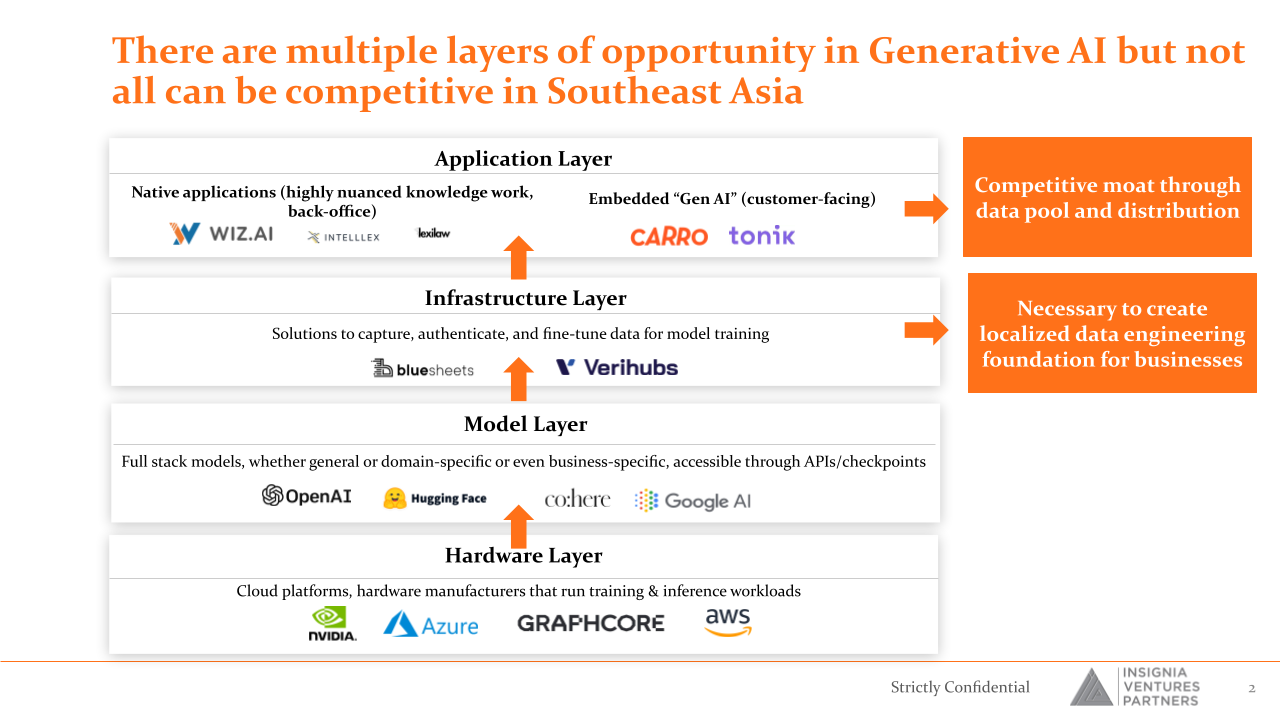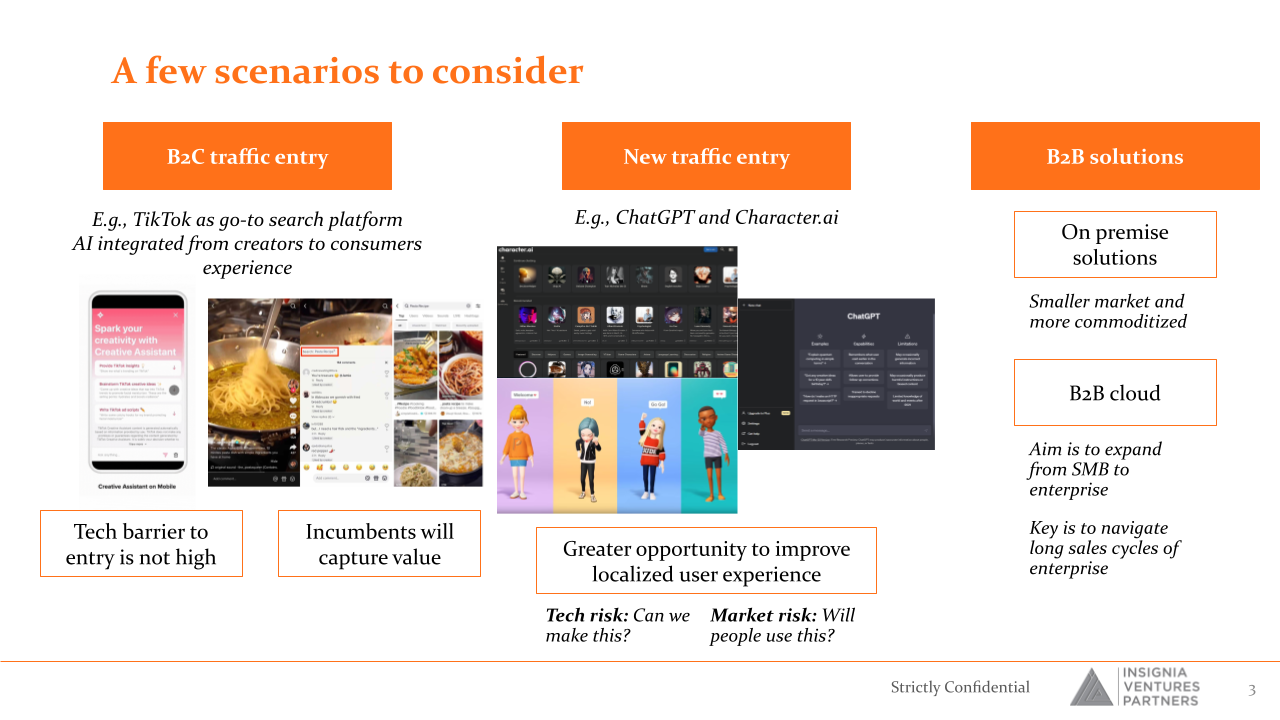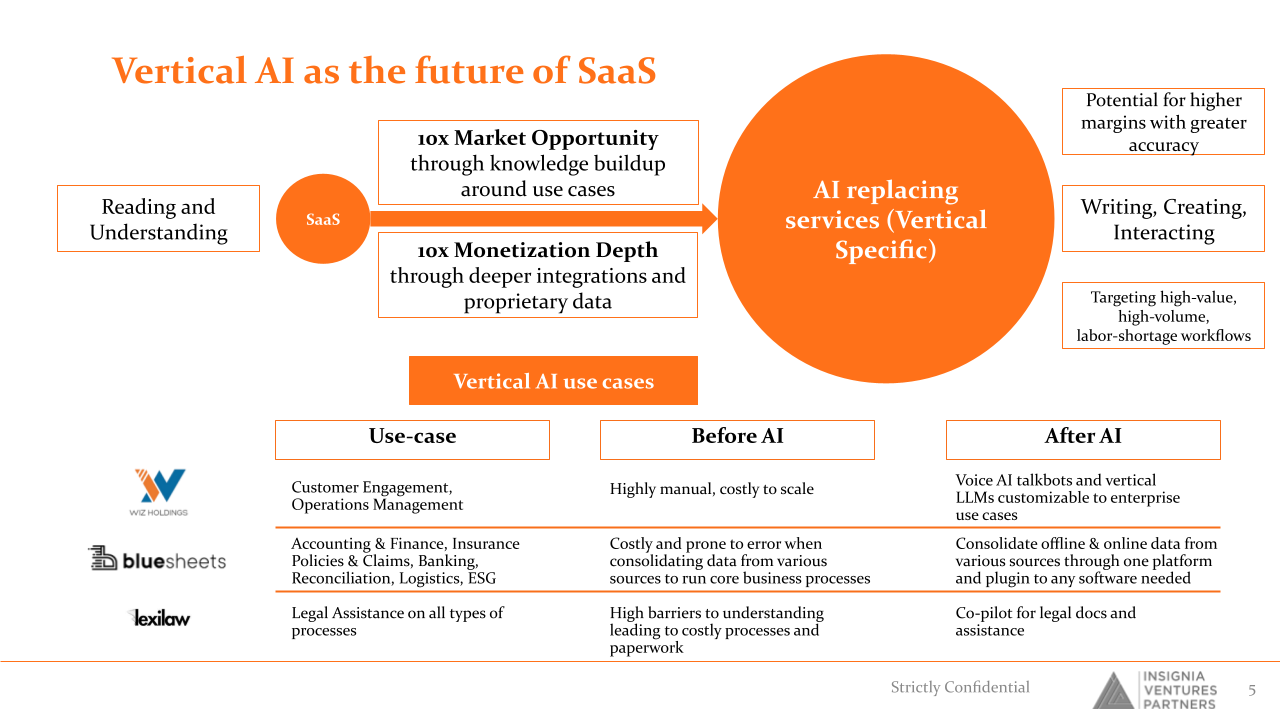In this year’s Stars Singapore, Yinglan gave a keynote on the investment opportunities in generative AI in Southeast Asia, in a “continuation” of his keynote last year also on generative AI.
But while last year’s talk focused on generative AI as an emerging technology changing the future of work and the way tech companies are being built, this year focused on the question of “where exactly are the winning opportunities for generative AI in Southeast Asia”, especially when you already have dominant general LLM players globally and low barriers to entry for AI-native applications.
Going back to the AI / data value chain, AI players from markets in Southeast Asia are more likely to have a competitive edge in the application layer where native applications are able to target highly localized knowledge and backoffice work and non-native apps are able to embed Gen AI to scale acquisition and retention strategies.
A competitive edge also exists for Southeast Asia players in the infrastructure layer, where there is demand for localized data engineering foundations for businesses.

There are multiple layers of opportunity in Generative AI but not all can be competitive in Southeast Asia
Looking at it from a go-to-market standpoint, B2C is a lot more challenging than B2B given how tech barrier to entry is not high. The threat comes from non-native players with established traffic like TikTok for example, already developing or launching in-house, consumer and business customer-facing generative AI solutions.
Even if an app were to capture new traffic and improve localized user experience, there are still the risks of feasibility (Can we make this (at scale)?) and market fit (will people use this?)
While there is more opportunity to monetize on top of localized B2B generative AI solutions, there is still the typical SaaS challenge of going from SMB to enterprise customers and navigating long sales cycles.

A few scenarios to consider
Nevertheless, it is clear that vertical (localized and industry-focused) AI is the future of SaaS. We’ve already actually written about this in a previous AI Notes essay, but from a user and product perspective.
But vertical AI is also the future of SaaS for investors because of how generative AI has the potential to significantly widen the market opportunity and deepen the monetization potential of software businesses. The market opportunity wides through the learning nature of generative AI to service an increasing number of use cases as it trains on more data and builds up a knowledge base.
The monetization deepens as the software solution is integrated into more business functions and tools and trains on proprietary data. There is potential for higher margins with greater accuracy.
By targeting high-value, high-volume, labor-shortage workflows, B2B generative AI solutions can not only create higher margins but also repeat sale and upsell opportunities.
Exponentially increase both market and monetization and you create a blue ocean in investment opportunity.

Vertical AI as the future of SaaS
Paulo Joquiño is a writer and content producer for tech companies, and co-author of the book Navigating ASEANnovation. He is currently Editor of Insignia Business Review, the official publication of Insignia Ventures Partners, and senior content strategist for the venture capital firm, where he started right after graduation. As a university student, he took up multiple work opportunities in content and marketing for startups in Asia. These included interning as an associate at G3 Partners, a Seoul-based marketing agency for tech startups, running tech community engagements at coworking space and business community, ASPACE Philippines, and interning at workspace marketplace FlySpaces. He graduated with a BS Management Engineering at Ateneo de Manila University in 2019.